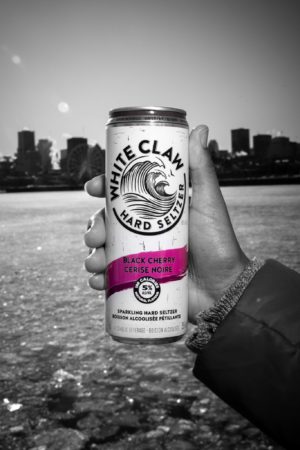
White Claw makes long-awaited debut in Canada


Before coming to Canada, White Claw was a popular hit in the U.S.

PHOTO: White Claw via Twitter @whiteclawcanada
Social media hype and trend pieces have made White Claw a sensation in the U.S. The hard seltzer’s long-awaited Canadian debut on Mar. 1, 2020 comes with no shortage of expectations for similarly effervescent fortunes.
Its Vancouver-born creator Anthony von Mandl, CEO of the Mark Anthony Group, said he is surprised by the rise of the low-calorie drink previously only available to cross-border shoppers and tourists.
The fizzy White Claw was a surprise hit south of the border that surged so much last summer, it sparked nationwide shortages.
Trend-watchers and analysts declared 2019 a breakout year for the low-carb, gluten-free drink, which debuted in 2016 but only caught fire last year when von Mandl says it captured 60% of the rapidly growing hard-seltzer category.
Von Mandl says about half of White Claw’s “small” marketing budget is devoted to social media promotion.
Von Mandl says White Claw drinkers appear to skew slightly male, but he suspects its light sugar and carb count attract both younger and older tastes that are looking for an alternative to beer.
It’s a shift that the big breweries have also noticed with Anheuser-Busch courting the market with its 90-calorie Bon & Viv and Boston Beer offering up the 100-calorie Truly, among others. White Claw’s 355-ml slim can also offers 100 calories, while the 473-ml can has 140 calories.
Toronto-based food and drink analyst Joel Gregoire of the market trends agency Mintel, says the alcoholic beverage industry is in the midst of transition in Canada.
Among beer, wine and spirits, the share of beer sales shrunk to 35% from 40% over the past decade, he says.
At the same time, a myriad of other spiked options have joined the market, with spirit coolers and flavoured malts and ciders enticing younger drinkers who have yet to acquire a taste for beer and established brands.
“It is still relatively low-penetrated within the Canadian market, but my hypothesis would be that there is opportunity for growth,” Gregoire said of hard seltzers.
Von Mandl credits much of his ability to grow White Claw into a sensation to the success of his other beverage blockbuster, Mike’s Hard Lemonade.
Von Mandl sold the Canadian division in 2015 when Anheuser-Busch, which operates under Labatt’s in Canada, made “an unbelievable offer” that coincided with von Mandl’s growing frustration over domestic red tape.
“We decided to focus on America and things exploded and it was the best decision we could make,” von Mandl said.
Four flavours of White Claw hit the shelves in Canada on Mar. 1, including: natural lime, black cherry, mango and grapefruit.
These distilled vodka-based concoctions will be made slightly differently than the malt-based U.S. versions, which von Mandl says is due to the setup at his two Canadian facilities – one in Toronto, another in Calgary.
Meanwhile, von Mandl is betting on continued U.S. growth in 2020 by building two more White Claw production facilities in New Jersey and Arizona at a cost of US$385 million.
He expects output will more than triple once those operations start, bringing the total number of U.S. facilities to 13 by June 2020.
White Claw also expanded the flavours available in the U.S. to include lemon, pineapple, watermelon and tangerine.